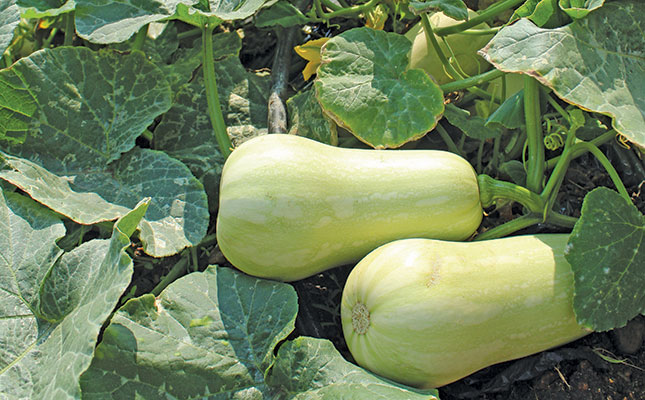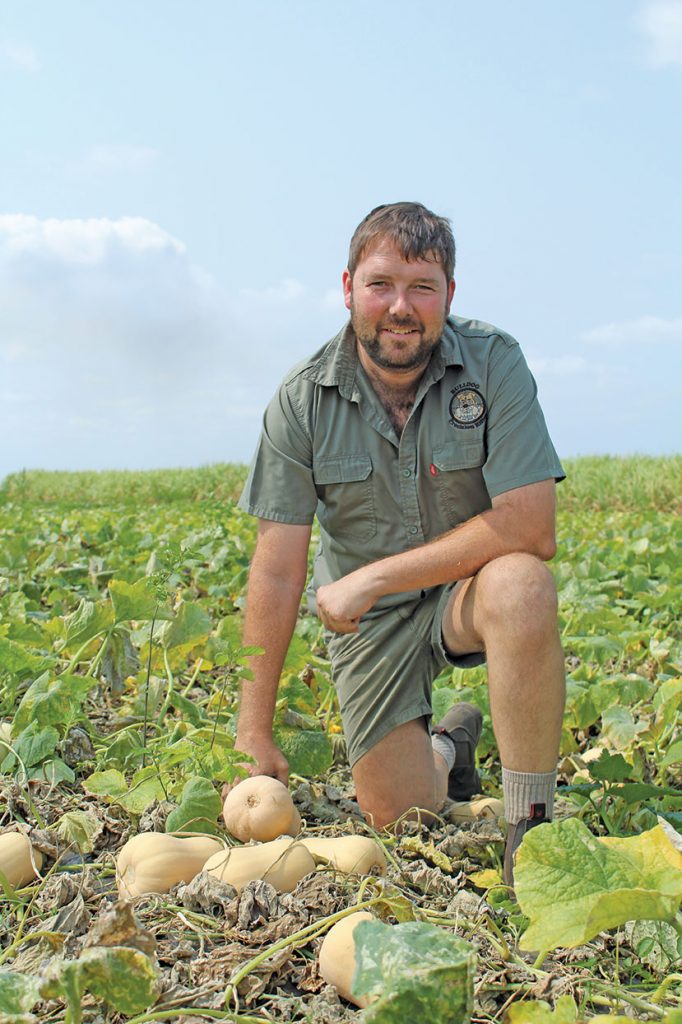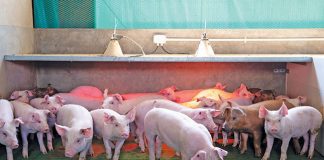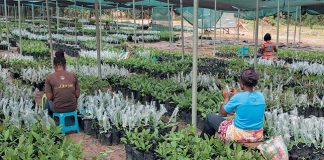
Photo: Lindi Botha
Three generations of the Steyn family have farmed vegetables near Komatipoort in Mpumalanga. They have experimented with a range of crops, lived through the ups and downs of the vegetable market, and know what it takes to run a profitable business in the sector.
When it comes to butternuts, one of their most important crops, Francois Steyn has specific advice for other growers: “Know what your market wants before you start planting, then make sure you deliver good quality. Rather exclude more butternuts from your consignment than deliver bad quality and risk your reputation. You only have one reputation. Ruin it, and you’ll struggle to regain your market.”

Steyn, who runs JF Steyn Boerdery with his father, Jakkals, and brother, Ruan, warns against the danger of taking shortcuts.
“You won’t save money by applying fewer inputs or using an inferior product. In the end, it’ll cost you dearly!”
Soil preparation
Steyn’s rigorous soil preparation regime involves discing the soil to work in any weeds or grass growing in the land, then ripping the soil. If many large clods remain, the soil is disced again to rotovate it.
The next step is to make ridges; these help to create an ideal seedbed and ensure water run-off during the wet season, as butternuts fare poorly in very wet soil. The roots stagnate under these conditions as there is no stimulus to grow further in search of water.
This in turn affects yield. The butternut farmer should aim for well-drained soil, stresses Steyn.
Fertiliser is added when the ridges are prepared, based on a soil analysis carried out at the beginning of the season. Nitrogen, potassium, phosphorus, calcium, magnesium and sulphur are invariably needed. Chicken manure pellets are also added to the soil at a rate of 2t/ha.
Steyn covers the ridges in 25-micron plastic mulch, as he finds this to be the most economical. The plastic prevents evaporation, thereby reducing water use, and keeps the soil temperature constant.
Keeping the soil temperature constant helps extend the growth phase of the plant, explains Steyn. If the temperature dips too low, the plant stops growing.
Drip irrigation
Steyn and his team place the drip irrigation pipes below the plastic mulch. The volume of water used depends on the soil type and variety, but a consistent flow is crucial to prevent water stress, which can result in the gourds bursting.
Irrigation is applied at a rate of about three cycles of water a week of four to six hours each.
Planting
Steyn uses a wide variety of seed and cultivars to service different markets. The seeds are sent to a nursery to germinate, and the seedlings are planted at about 10 days old on the ridges.
“Seed has become very expensive and the germination rate isn’t always 100%,” says Steyn. “One year, mice ate all the seed!”
Planting seedlings is a better bet. “It reduces your risk and the time to harvest, because the plants have already started growing by the time they’re in the land.”
The seedlings are planted by hand, a labour-intensive process. But Steyn says that 30 people can plant 120 000 seedlings on 8ha in one day.
He emphasises the need to choose a cultivar that produces consistently sized gourds.
“Each butternut of the same variety must look and weigh more or less the same,” he explains. “You can’t have mixed sizes, because it’s difficult to supply a market that wants a set size that fits in a certain size bag. Yield should also be consistent.”
Butternuts do not do well in frost or direct sunlight, he adds.
“If the temperature reaches the higher 30°Cs, quality is reduced. As long as there’s coverage by the leaves, the butternuts are okay. But when the leaves start wilting, the coverage shrinks and the butternuts struggle.”
Wind is also a problem, as it causes the tips of the leaves to die back, further reducing coverage.
“When temperatures climb excessively, we irrigate to prevent the leaves from wilting,” says Steyn.
Butternuts are planted throughout the year, but the best prices are realised from August to October. This is when supply is low, as many of the other planting regions experience frost and therefore cannot produce a winter crop.
The pest load on butternuts is relatively low compared with other crops. Leaf miner, pumpkin fly and powdery mildew are greater threats to a maturing crop. Steyn scouts regularly and applies chemicals as needed.
As powdery mildew causes the most damage and requires more applications, he alternates chemicals to prevent the plants from building up resistance.
Harvesting
When temperatures are higher, the butternuts can be harvested after 70 to 80 days. In the colder months, this increases to 90 days.
Steyn currently obtains a yield of approximately 25t/ ha, but is looking to achieve 35t/ ha with the larger varieties, and about 10% less than this with the smaller varieties.
He notes that the process is not overly labour-intensive if managed well, and the entire crop can be harvested at once, rather than in stages as the vegetables mature.
A land is planted to butternuts for two years, then rotated with peppers and sugar cane.
‘Know your market’
As noted, Steyn says it is crucial for the farmer to understand his or her market before deciding on a cultivar. Each market has a preference for a certain size and shape. The processing market, for example, prefers butternuts in excess of 1,3kg, while supermarkets and fresh produce markets opt for a size of 550g to 650g or 650g to 1kg.
Steyn has also noticed a new tendency towards smaller butternuts of about 400g.
The processing market can be tricky as it requires large butternuts that have a limited market elsewhere.
“This means that if you’re going to produce such large-sized vegetables, you need to be sure there’s a market for them. If the processors aren’t interested, you have no one else to send those butternuts to, because they’re too large for the fresh market. It really limits you and can be risky,” he cautions.
Consistency is the key
Prices cannot be guaranteed; they depend on supply and demand.
“But,” says Steyn, “it’s still important to get some idea of what the price will be before you plant.”
Managing price variances requires tenacity, and the farmer simply has to “ride the wave”.
“We do well in some seasons, and not so well in others,” he explains.
“I’d rather take a lower price that’s consistent throughout the season than chase one contract after another, trying to cash in on peaks.”
The family sets aside much of their land for commercial seed companies to conduct trials for new vegetable varieties. This benefits both the seed companies and their business.
“Cultivars have a limited lifespan,” explains Steyn.
“Once the seed company feels that a particular one is no longer reaching its potential, it’s discontinued. It’s important for the farmer to stay ahead of this curve and have a plan what to plant in its place. If you don’t know what’s going on in the seed market, you’ll have to scramble to find something that will work for you.
“For example, if we hear of a variety planted in Gauteng that’s working wonders for farmers, that doesn’t mean its going to do well in Komatipoort, because the climate isn’t the same. So it’s important to choose varieties that are trialled locally.”
With the trials being done on their farm, the Steyns can see at first hand how the cultivars fare.
“I can make my selections before anyone else. I get all the information of each variety directly from the seed company. If it works in the trial, we know it’ll work on our farm.
“We start by planting a small area to it and gradually increase this if it does well. This way we can stay ahead with new and improved varieties,” explains Steyn.
Email Francois Steyn at [email protected].











